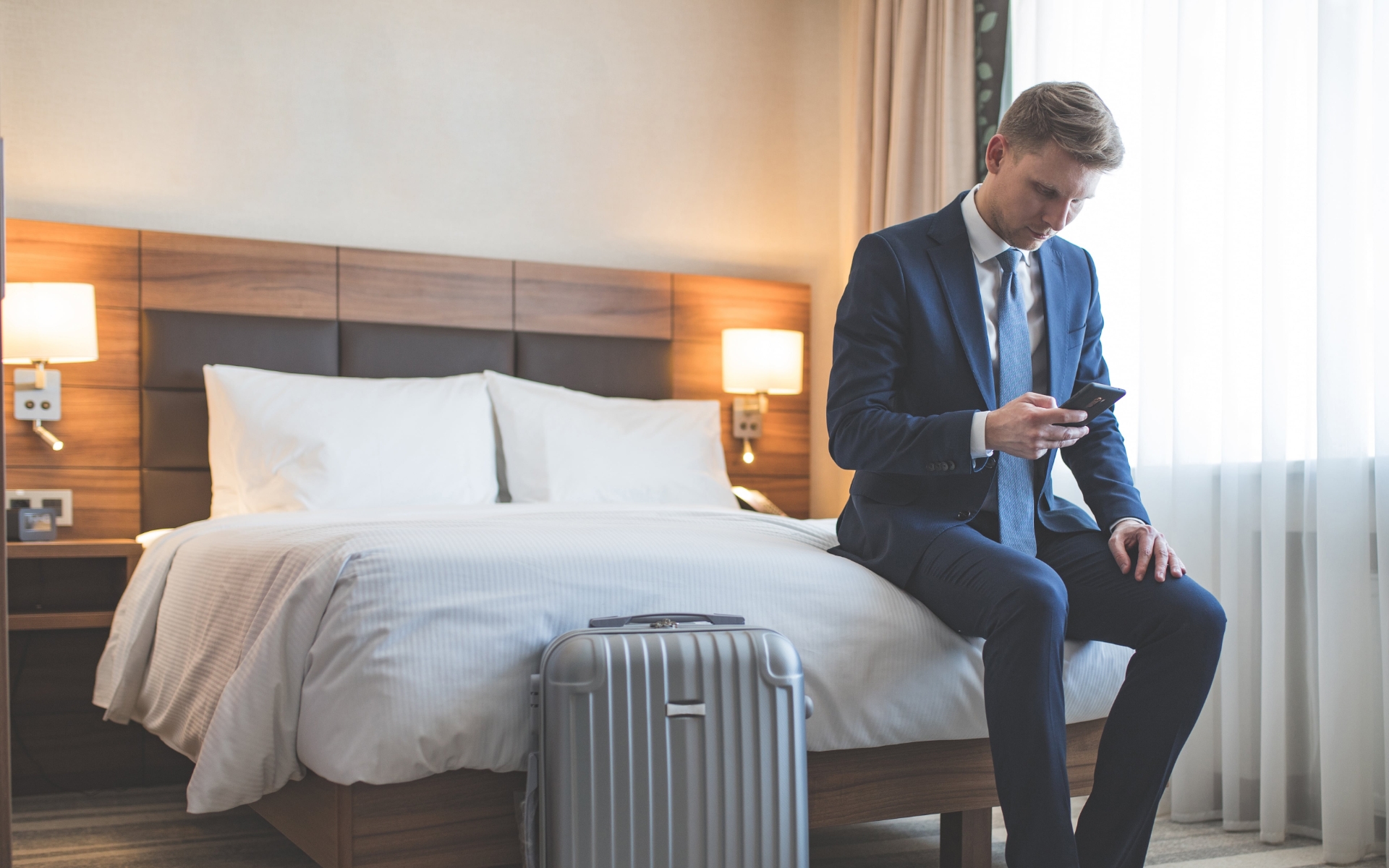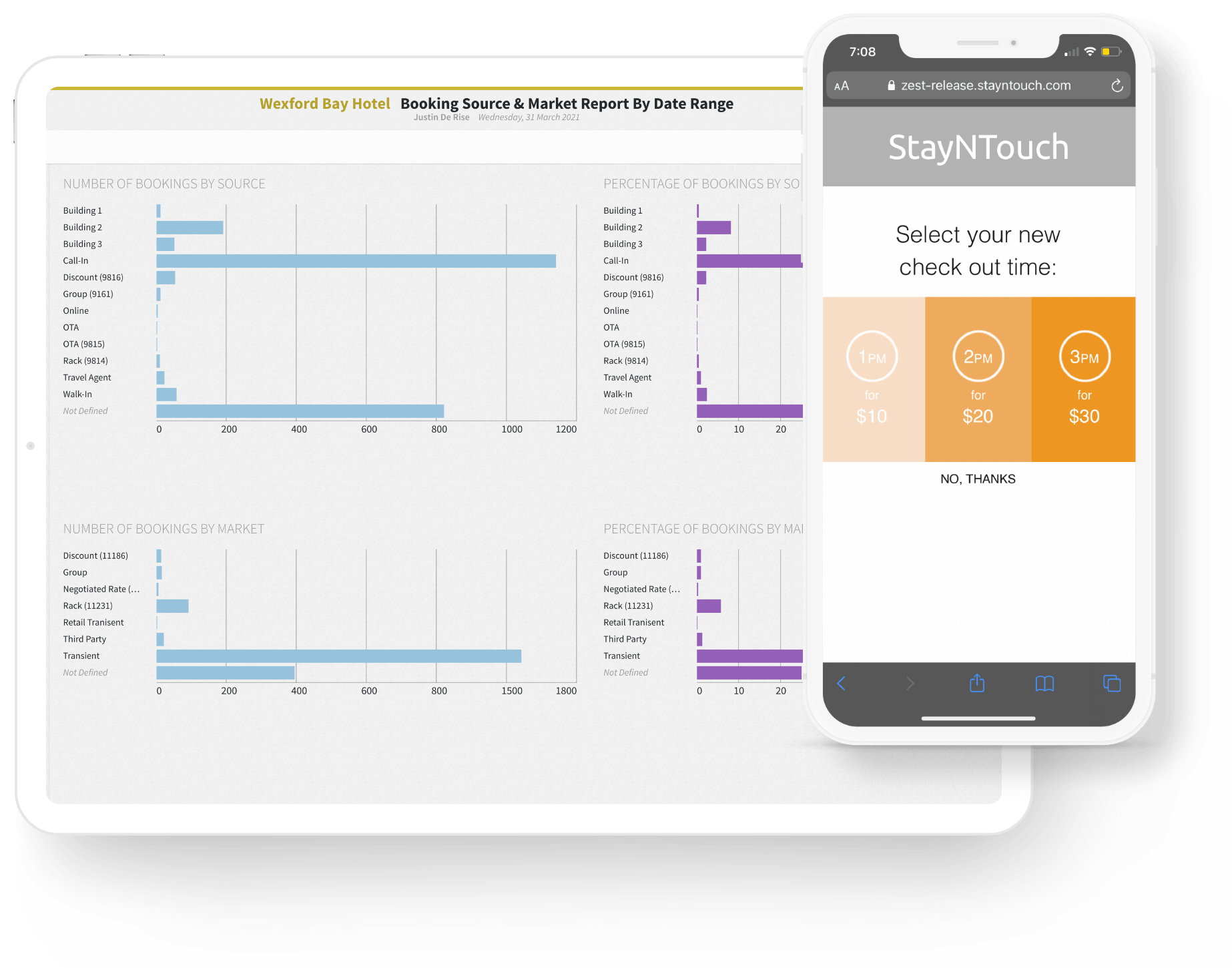
A Cool Hotel PMS Should Be Ready For Solomo
Anyone who is looking for a new hotel PMS (property management system) should make sure it is ready for “solomo” (social, local and mobile). In
As we kick-off the new year, the hospitality industry has largely recovered from the COVID-19 pandemic, but faces a market with new dynamics between travelers and technology, and new customer segments, sentiments and concerns. In this article, we’ll examine three major trends in traveler sentiments for 2022, and explore how hotels can leverage technology to address the emerging demands of their guests.
Contactless technology has been steadily growing in the travel market for many years, driven primarily by its convenience and ability to personalize the welcome and departure experience. Since the pandemic, however, contactless tech has moved from a convenient luxury to a hygienic necessity, as it delivered an easy, socially-distanced alternative to the traditional check-in line at the front desk. When a recent survey asked which technologies would increase customer confidence in travel over the next year, 41% placed contactless technologies such as self-service check-in and digital payment platforms at the top of the list. And this trend will only continue in 2022.
Consequently, investing in a PMS that delivers a contactless self check-in option is a must-have for hotels looking to succeed in the post-pandemic era. Contactless technology can bridge the apparent gap between “high tech” and “high touch” service by providing guests with a choice in their welcome and departure experience: Whether to enjoy a fully contactless check-in through their smartphone, a guest-facing kiosk strategically placed in the lobby, or through a friendly hotelier aided with a tablet.
Mobile check-in allows guests to check into and access their rooms in under 60 seconds, while guest facing smart-kiosks offer the opportunity to eliminate the front desk, and reimagine the lobby as a space for socializing, dining and co-working 一 while still maintaining high standards for hygiene and social distancing. Contactless check-in can also save valuable time and resources for smaller hotel teams, letting hoteliers check-in a guest in as few as 5 clicks and 30 seconds, from anywhere the guests are on property.
The post-pandemic era is changing the way people travel, and how they work 一 and savvy hotels can capitalize on both. During the pandemic, teleworking grew from an optional ‘perk’ for a small number of employees, to a necessary health safeguard in all but the most essential fields. Now that the pandemic is waning, more people are returning to the office, but teleworking remains a viable alternative for an increasing share of the white-collar workforce. In fact, Forbes estimates that the number of remote workers has doubled in 2021, and that 70% of the workforce will be working remotely at least 5 days a month by 2025.
But how does this affect the hotel industry? While convenient, teleworking from ad-hoc home offices can have definite pitfalls, from distracting children or pets, to a lack of modern office equipment, to the simple monotony of being confined to the same space with little social interaction.
But savvy hotels can offer an escape to remote workers: By leveraging a PMS that can deliver bookings on an hourly or day-use basis, hotels can capitalize on the growing ‘space as a service’ business model. By booking rooms or event spaces on an hourly basis, hotels can offer a quiet and productive space to remote workers who want a change of pace, and on-demand meeting space for businesses with ‘virtual’ offices. And when hourly reservations are integrated with the full PMS, hotels can offer remote workers a completely seamless experience, including automatic buffers for housekeeping, targeted amenity and upgrade options, and detailed analytics and KPIs.
After 18 months of social distancing and lockdowns many consumers are more than eager to start traveling again. According to Destination Analysts, 76% of US travelers in mid-December 2021 are in a “ready-to-travel” state of mind, while a recent study by SAP Concur noted that 96% of business travelers in 25 global markets are excited to travel again for work. While this represents a golden opportunity for resource and reservation-starved hotels, it also presents a challenge: How can hotels attract these new travelers, maximize revenue for each booking, and enhance the guest experience?
Ultimately, the answer is for hotels to create a guest experience that is hyper-personalized, and seamlessly integrated. We can see the beginnings of this personalization in contactless check-in: Hotels that send targeted, automated offers for room upgrades and amenities directly to a guest’s smartphone can leverage the welcome experience to customize and enhance the guest’s stay 一 and earn up to 240% ROI each quarter in the process. Similarly, hotels that utilize hourly bookings and guest-facing kiosks can redesign their lobby to reflect the aesthetics and function of their brand vision, adding anything from restaurants or lounges, to interactive art installations, to monetized co-working spaces.
But this is just the beginning: The emerging Internet-of-Things (IoT) promises a world where an increasing number of objects and touchpoints are customizable and connected. Already, tech-forward hotels are offering their guests in-room tablets, which let travelers customize everything from thermostats and motorized blinds, to mood lighting, and mobile entertainment. A cloud-native PMS can unify the data from all of these touchpoints into a comprehensive guest profile, which can then be used to inform hotel staff and additional tech platforms. A cloud-native PMS can also integrate with the AI from a Customer Relationship Manager (CRM) to help predict and optimize a guest’s spending patterns 一 and a hotels’ future revenue.
Ultimately, the need for contactless service, daily/ hourly bookings, enhanced personalization, and increasingly connected touchpoints, points to the need for a cloud and mobile PMS that can be seamlessly flexible and scalable. Currently, this means investing in a PMS that is not only based on an open-API architecture, but one that utilizes simplified and powerful webhooks to facilitate efficient, precise, and near real-time data exchanges between platforms. In the future, however, the hotel PMS will do much more than simply manage rooms and rates 一 it will become a central hub to customize (and monetize) the hotel’s countless assets and guest touchpoints. In this sense, 2022 can be seen as a year in transition: Travelers want more than just a generically efficient and well-run hotel. They want an enhanced and intelligent guest experience that can be delivered seamlessly, and specifically tailored to their unique needs and preferences.

Anyone who is looking for a new hotel PMS (property management system) should make sure it is ready for “solomo” (social, local and mobile). In

Rover is a lot like that premium brand of vehicles y’all are likely familiar with. We know that your front desk will heartily greet road

The guest had a great day, her meetings went well, she feels good. She takes a taxi to the hotel where she will be staying


See how StayNtouch’s Cloud PMS, Guest Mobility, and Guest Kiosk solutions deliver better results for hotels through better front & back of house communication, increased mobile touch-points, more revenue and operational efficiency, and unlimited interfaces.
Your demo will include how to:

Manage and Set Tasks Across Your Departments

Ensure Guest Satisfaction & Safety With Contactless Check-in Options

Automate Easy Upsells & Monetized Early/Late Checkouts

Set & Manage Rates/Availability

Integrate With Tools and Platforms Essential
to Your Hotel
And More!